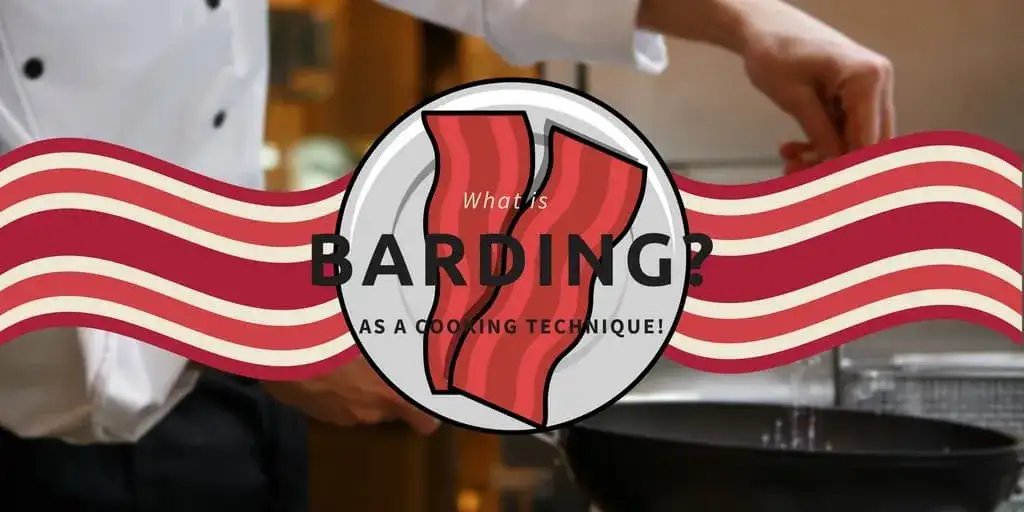
What is Barding as a Cooking Technique?
Barding is a cooking term that a lot of chefs and cooking connoisseurs, especially barbecue fanatics, use. That definitely doesn’t mean that it is a term common to everyone, what you probably also didn’t know is that barding is a technique the vast majority of us use in our typical cooking routines and recipes.
Barding is used mostly for meats, because they require certain amounts of fat in them from drying out during cooking. All in all, by barding meats, it helps them stay nice and juicy during a smoky roast.
Here is a deeper look at what a barding food is and how to bard a good piece of meat.
What is the Definition of Barding?
Barding is a technique used primarily on meats to keep them juicy and tender while on the commercial grill. This technique is more common than most people realize, though. In fact, many of us use it in our regular bacon cooking routines.
It is simply a fancy term, and this term refers to the process of tying a piece of fat around a piece of lean meat or poultry. These pieces of fat are most commonly things like suet or streaky bacon.
In the end, this all helps the meat stay moist by compensating for the fat that it loses while being cooked.
How Do You Use Barding on a Piece of Meat?
As stated before, to bard a piece of meat you simply wrap a strip of fat around the meat or poultry item you are cooking.
The fat can be anything from suet to American style, streaky bacon.
Typically, you want to wrap the fat around the meat before it goes on the grill. Then, you keep it on until about a few minutes before it is finished.
This will get you the best results for your finished meats, keeping them the freshest they can be.
If you are using streaky bacon, you will also get a natural salty flavor, as most of the salts from the bacon are carried over to the meat as it cooks. That way, you will have to use less table salt and have a more natural, smoked salty flavor.
Additionally, it is advised that you use unsmoked bacon when barding beef instead of the typical smoked pieces.
What are the Differences between Barding and Larding?
The difference between the terms larding and barding lies in the way the two techniques are applied.
Both are used on meat to keep it moist and fresh during cooking. However, the processes are different.
Larding refers to injecting the fat into the meat instead of wrapping it around as done when barding. Larding is done especially with beef, and the fats that can be injected into it are usually pork fat but can also be beef fat.
When larding a piece of beef, the fat is injected into it via a large and specific needle called a “larding needle” before going on the grill.
One of the main purposes of larding is not only to protect the meat from drying out, but also to give it additional artificial flavor, whereas the flavor given to meat through barding is all natural and transported directly from the strips wrapped around it.
For this reason, barding is considered to be more useful and more effective and is the fastest. With larding, the meat has to be injected by the larding needle multiple times during a roast to ensure that not just one part of it is protected from dryness, therefore making the process a bit longer.
To Bard or to Lard?
When roasting meat, it is very likely that you are faced with this question: do I bard, or do I lard? The tough part is, there is no right or wrong answer.
Instead, look at your priorities. If you want a more natural salty flavor in your meat, barding is the way to go.
If you are on a schedule and really don’t want to spend much time roasting meat, barding is also the obvious way to go.
However, if you are cooking beef and don’t care too much about artificial or natural flavors, then larding is the fit for you.
